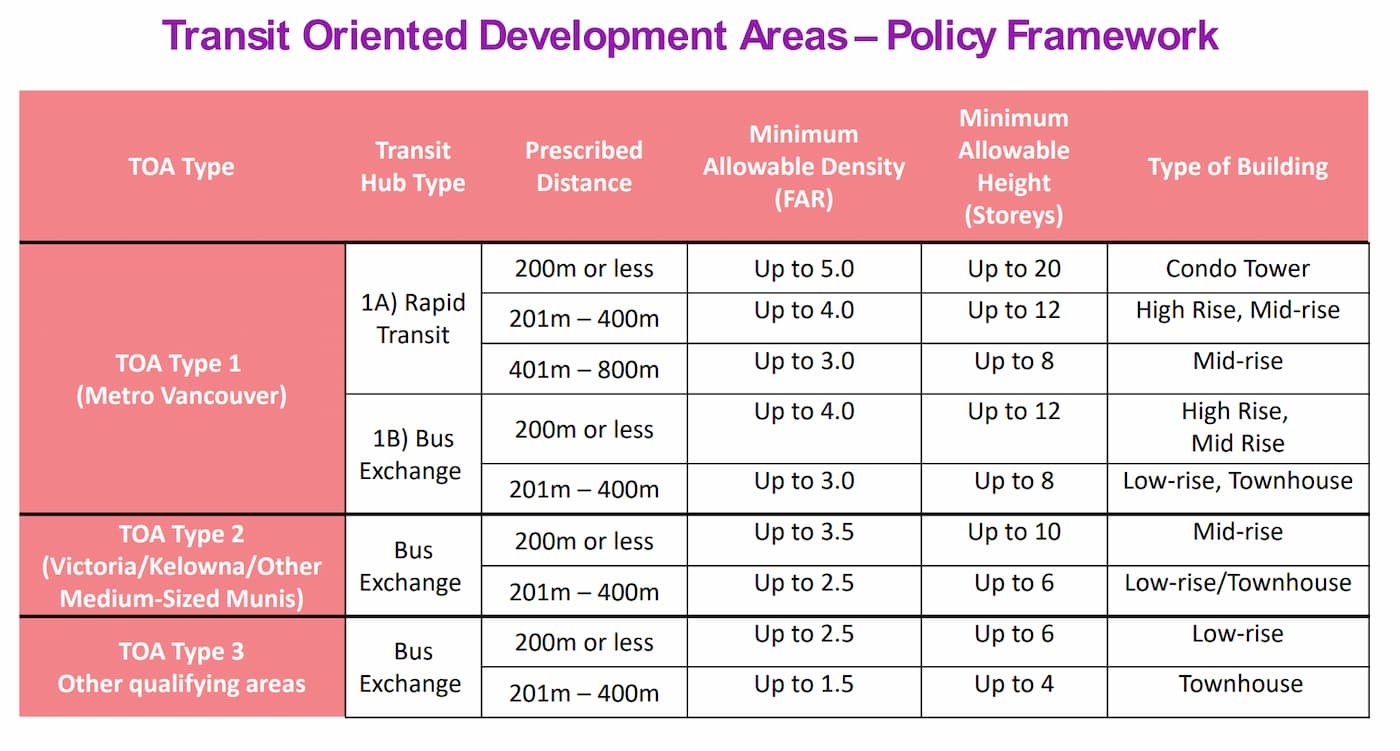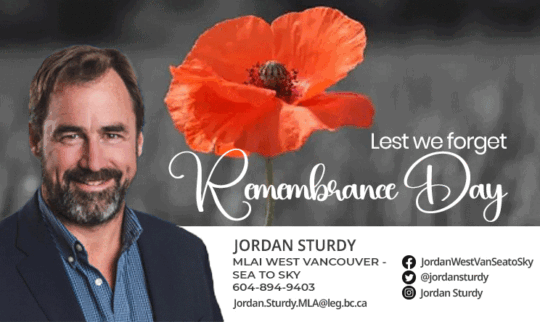
Building more homes near transit hubs is the focus of a new proposed provincial legislation aimed at speeding up the delivery of homes near transit, services and amenities that make life better for people.
“Building more homes near transit is good for people, communities, and helps make the most of transit, infrastructure and services,” said Ravi Kahlon, Minister of Housing. “But layers of regulations and outdated rules are stopping this kind of development from becoming a reality in too many municipalities. That’s why we are taking action to remove barriers and deliver more transit-oriented communities, faster.”
The proposed legislation will require municipalities to designate Transit Oriented Development Areas (TOD Areas) near transit hubs. These TOD Areas are defined as land within 800 metres of a rapid transit station (e.g., SkyTrain station) and within 400 metres of a bus exchange where passengers transfer from one route to another (e.g., Newton Bus Exchange in Surrey).
In these designated TOD Areas, municipalities will be required to:
- permit housing developments that meet provincial standards for allowable height and density. The minimum allowable height and density is based on tiers – at its highest in the centre of the TOD Area – and will differ based on the type of transit hub (SkyTrain stop/bus exchange) and a municipality’s size, population and location. Note: A full list of intended allowable standards is available in a backgrounder.
- remove restrictive parking minimums and allow for parking to be determined by need and demand on a project-by-project basis.
- utilize standards and details in the provincial policy manual to provide consistency in the approach to developing TOD Areas.
For the remaining TOD Areas that require local government designation, municipalities will have until June 30, 2024, to designate these areas. It is expected that approximately 100 TOD Areas will be designated in approximately 30 municipalities throughout B.C. within the first year of the new legislation coming into effect. Where a local government’s current zoning allows for less density than the new provincial minimum, the new increased minimum density must be allowed by the local government. However, local governments can approve higher density at their discretion.
Municipalities will still be able to require builders and developers to add parking to accommodate people living with disabilities. Commercial parking requirements will not be affected within TOD Areas. Builders and developers will be able to build as much parking as desired for a project but will not be required to meet a minimum standard of parking units.
“We’re working to leverage public lands to build more affordable housing in connected, livable communities,” said Rob Fleming, Minister of Transportation and Infrastructure. “This legislation is the next step forward to help remove roadblocks and fast-track more transit-oriented development that works for people in their communities.”
“In some cases in B.C., higher-density neighbourhoods have been established around transit hubs, but in other cases, restrictive zoning bylaws and parking requirements, along with delayed development approvals, continue to slow down the delivery of homes and services near transit hubs,” the Province said. “As B.C. continues to invest significantly in transit infrastructure, it is important that this investment accommodates additional housing units to create vibrant and livable neighbourhoods.”



